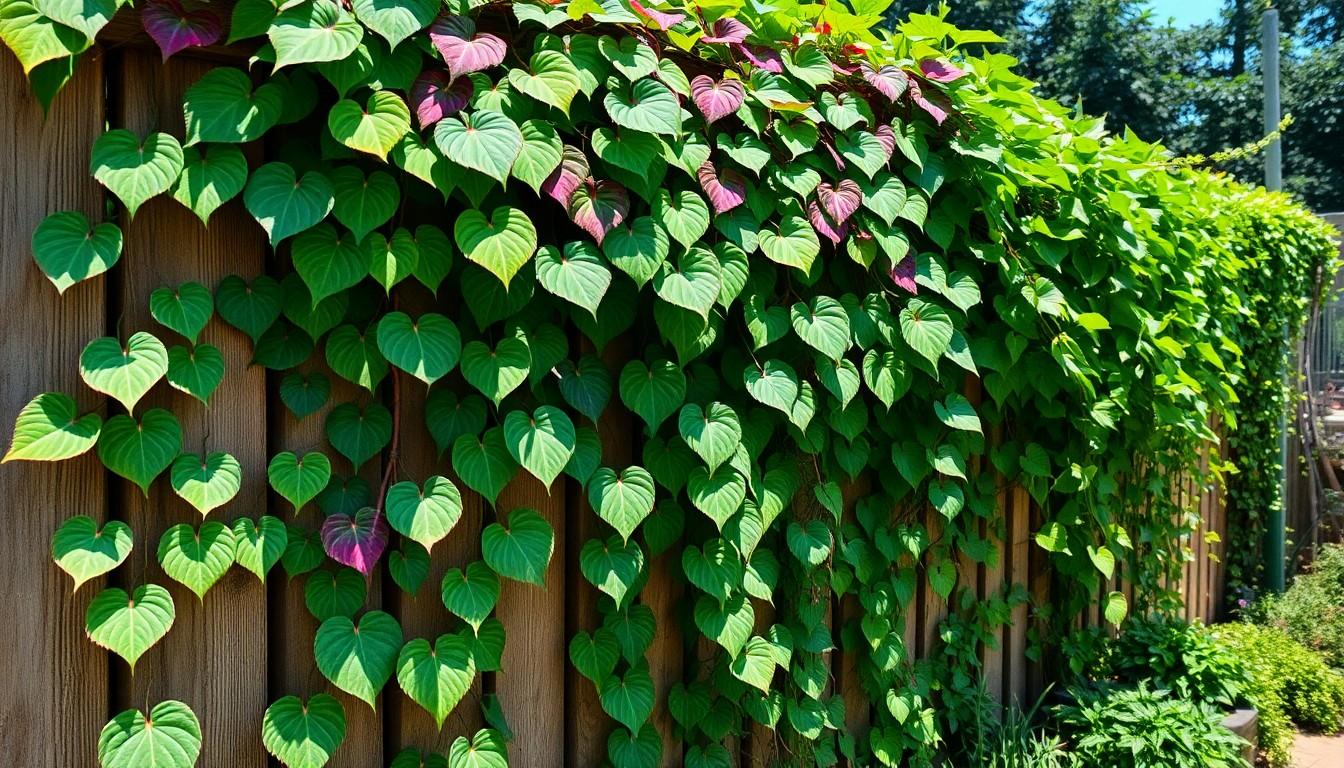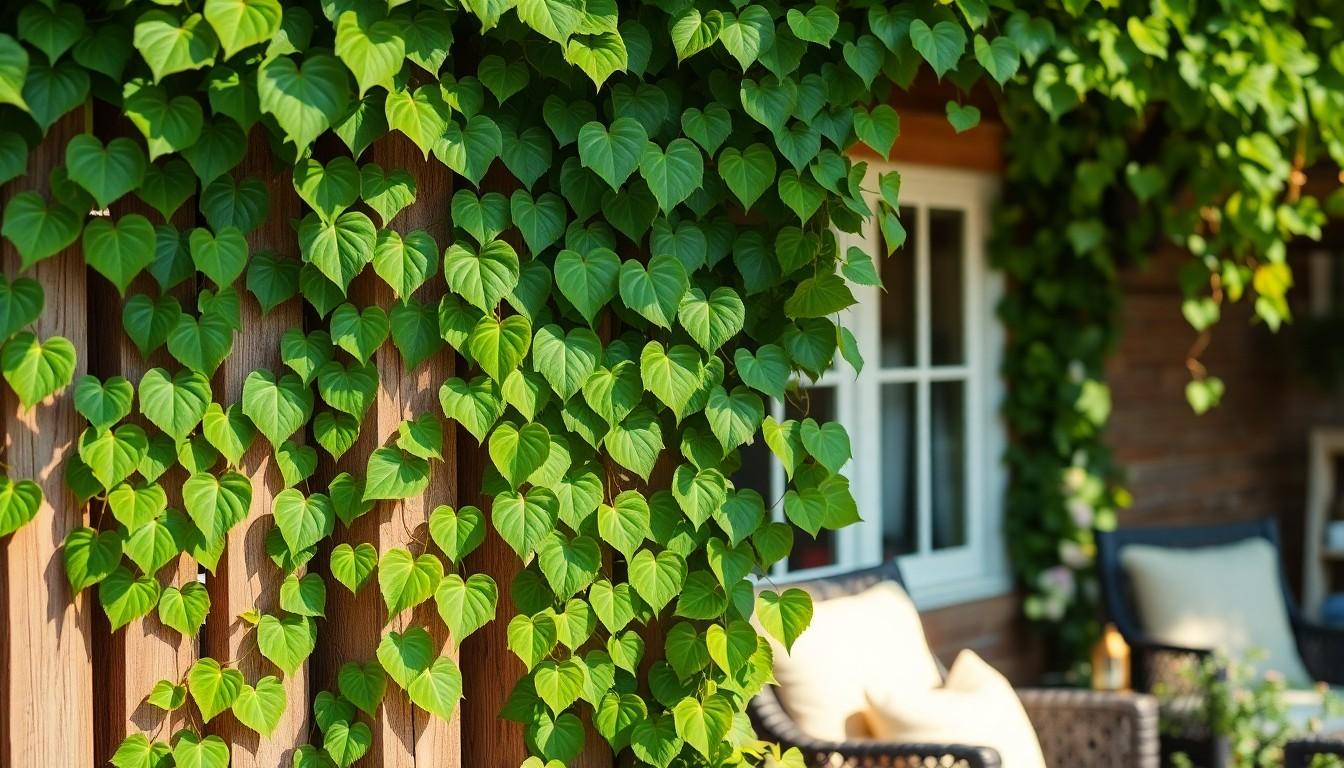Ivy plants are the ultimate outdoor companions, effortlessly transforming dull spaces into vibrant green retreats. With their charming tendrils and heart-shaped leaves, they bring a touch of elegance and whimsy to gardens, fences, and walls. Who wouldn’t want a little nature’s magic creeping up their home?
Overview of Ivy Plants Outdoor
Ivy plants thrive in outdoor environments, adapting to various conditions. Their adaptability allows them to flourish in sunny and shady areas. With over 400 species, the common types include English ivy and Persian ivy. Each species exhibits unique characteristics, such as distinctive leaf shapes and growth patterns.
They are perennials, ensuring that they return year after year, providing continuous greenery. Hardy in USDA Zones 4 to 10, they withstand diverse climates. The climbing nature of ivy makes it ideal for trellises, fences, and walls, creating lush green backdrops.
Certain species offer additional benefits, such as air purification. Studies from the NASA Clean Air Study show that ivy plants can help remove indoor pollutants, enhancing air quality. This characteristic makes them appealing for outdoor spaces adjacent to living areas.
Maintenance requirements are low, suiting both novice and experienced gardeners. Regular watering during dry spells promotes healthy growth. Pruning controls their spread, ensuring they don’t overtake unintended areas. Fertilizing once a year with balanced fertilizer supports vigorous growth and vitality.
Pests and diseases are generally minimal concerns, but occasional issues may arise. Aphids and spider mites could affect them, though they usually respond well to natural pest control methods. Ensuring proper air circulation around the plants can minimize fungal infections.
Planting ivy provides aesthetic benefits, transforming ordinary spaces into vibrant environments. Its trailing growth creates unique visual interest, enhancing pathways and garden borders. When paired with flowering plants, ivy complements their colors, adding depth and texture to outdoor designs.
Benefits of Growing Ivy Plants Outdoor

Ivy plants provide numerous advantages when grown outdoors. Their versatility and resilience contribute to a variety of settings and aesthetics.
Aesthetic Appeal
Ivy plants enhance outdoor spaces with their graceful tendrils and vibrant foliage. Climbing varieties cover walls and fences with lush greenery, creating a dramatic effect. Heart-shaped leaves bring texture and contrast to landscapes, and different species offer unique colors and patterns. Besides serving as ground cover, they soften hard surfaces and provide a perfect backdrop for flowering plants. Gardeners appreciate how ivy can harmonize with various design styles, from classic to contemporary.
Environmental Benefits
Ivy plants contribute positively to the environment in several ways. They improve air quality by filtering dust and pollutants, benefiting nearby living areas. Their ability to provide shade helps regulate temperatures, lowering energy costs for homes. Additionally, ivy plants support local wildlife, offering shelter and food for birds and beneficial insects. These attributes enhance biodiversity and promote a healthier ecosystem. With their low maintenance needs, ivy proves to be an eco-friendly choice for outdoor gardening.
Popular Types of Ivy Plants for Outdoor Use
Ivy plants come in various species, each offering distinct features and benefits for outdoor gardening. Three popular types are English ivy, Algerian ivy, and Japanese ivy.
English Ivy
English ivy stands out with its rich green leaves and charming growth habit. This species thrives in both sunny and shady areas, making it versatile for different landscapes. It can reach up to 80 feet in length, trailing beautifully along walls and fences. Known for its air purification properties, it effectively removes toxins from the air. English ivy also attracts wildlife, providing habitat for birds and insects. Regular pruning maintains its shape and prevents overcrowding, ensuring a healthy growth pattern.
Algerian Ivy
Algerian ivy features broader, leathery leaves that exhibit a glossy finish. Unlike other ivies, it prefers warmer climates and can tolerate sun or partial shade. This plant reaches heights of up to 50 feet, providing excellent coverage on structures. Its thick foliage offers significant shade, making it ideal for creating cool outdoor spaces. Algerian ivy also withstands drought conditions better than many other species. Pruning is essential to control its growth and to promote bushier foliage.
Japanese Ivy
Japanese ivy, with its unique leaf shapes, provides an interesting visual contrast in gardens. It thrives in shaded areas, making it perfect for covering darker spots. The plant’s trailing vines can extend up to 30 feet, effectively manipulating vertical spaces. Resistant to pests and diseases, Japanese ivy ensures low maintenance requirements. It works well in containers or as ground cover, helping to prevent soil erosion. Due to its adaptability, it continues to be a favorite among gardeners seeking diverse plant options.
Growing Conditions for Ivy Plants Outdoor
Ivy plants thrive outdoors with specific growing conditions. Understanding these conditions helps ensure their healthy growth and lush appearance.
Sunlight Requirements
Ivy plants adapt well to varying sunlight conditions. They flourish in both full sun and partial shade. Some species, like English ivy, tolerate dappled sunlight, while others prefer shadier spots. Too much intense sunlight can scorch the leaves, affecting their vigor. Providing filtered light or morning sun with afternoon shade often promotes optimal growth and lush foliage.
Soil Preferences
Ivy plants favor well-draining soil rich in organic matter. They perform best in slightly alkaline to neutral pH levels, generally between 6.0 and 7.0. Incorporating compost enhances soil fertility and drainage. Additionally, sandy loam or loamy soil types contribute to vigorous root systems. Heavy clay soils may hinder growth, leading to root rot. Ensuring proper drainage keeps ivy healthy and thriving.
Watering Needs
Ivy plants require consistent moisture, especially during dry periods. Regular watering maintains healthy growth, but overwatering can lead to root rot. It’s vital to allow the top inch of soil to dry between waterings. Established ivy plants are relatively drought-tolerant, though young plants need more frequent moisture. Rainfall often suffices, but supplemental irrigation during prolonged dry spells supports their lush appearance.
Maintenance and Care Tips for Ivy Plants Outdoor
Ivy plants require minimal care to thrive outdoors. Proper maintenance ensures they flourish and enhance outdoor aesthetics.
Pruning and Trimming
Regular pruning encourages healthy growth in ivy plants. Trimming should occur at the start of spring or after blooming to promote bushier growth. Removing old or damaged vines prevents overcrowding and encourages airflow, minimizing disease risks. Shears or sharp scissors make clean cuts, ensuring plant health. For sprawling types, cut back longer tendrils to achieve a more controlled shape. Aim for a well-balanced appearance while maintaining the ivy’s natural look.
Pest and Disease Management
Pests such as aphids and spider mites occasionally affect ivy plants. Monitoring for signs like discoloration or distorted leaves helps catch infestations early. Using insecticidal soap or neem oil offers effective solutions against these pests. Disease risks remain low, though conditions like leaf spot can occur if plants receive excessive moisture. Ensuring proper drainage and spacing improves air circulation, reducing disease likelihood. Regular inspections and prompt action contribute to a healthy, vibrant ivy display.
Conclusion
Ivy plants are a fantastic choice for enhancing outdoor spaces with their lush greenery and elegant growth patterns. Their adaptability to various light and soil conditions makes them suitable for almost any garden. With minimal maintenance requirements, even novice gardeners can enjoy their beauty year after year.
In addition to their aesthetic appeal, ivy contributes positively to the environment by improving air quality and providing shade. By selecting the right species for specific conditions, gardeners can create stunning displays that complement their outdoor designs. Embracing ivy plants not only transforms ordinary spaces but also fosters a vibrant ecosystem that supports local wildlife.

